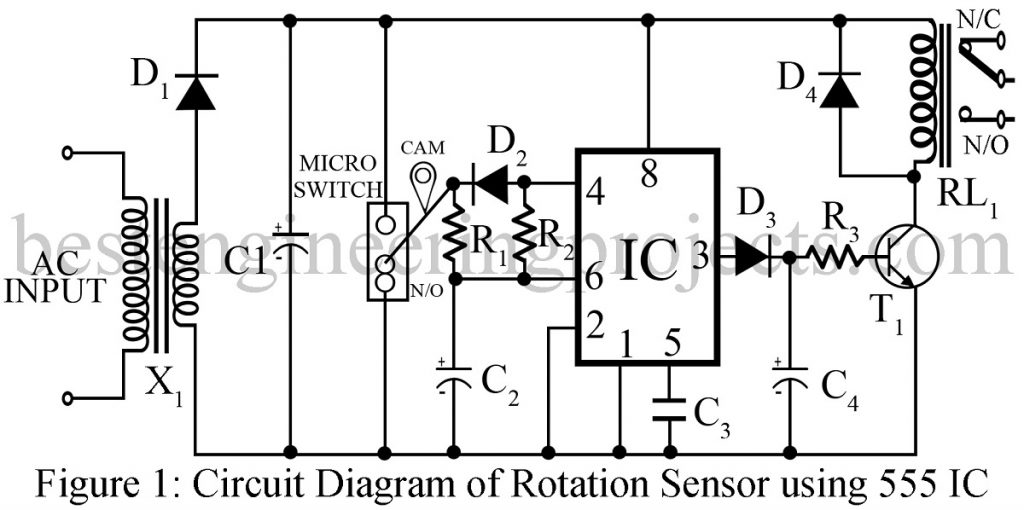In this section, we discuss another application of the most popular IC, the 555 timers. Introduced in 1972 by the Signetics Corporation as a bipolar integrated circuit, the 555 is also available in CMOS technology and from several manufacturers. There are various projects we had already posted in the timer IC 555-based projects section. Now, we have come up with another interesting project called rotation sensor using the most popular IC of all time 555 Timer IC.
When more conveyors or equipment are used in the processing system and anyone device fails, there will be an accumulation of materials conveyed causing damage to the equipment.
One method for avoiding this is to interlock the driver motors of each piece of equipment. But if the failure is mechanical (for instance, if the drive chain is broken), the interlocking system never helps in avoiding such a situation.
Circuit Description of Rotation Sensor Using 555
Here is a simple circuit built around timer IC 555 and a microswitch that senses the rotation of the equipment and when it stops, the complete system is switched off shown in figure 1.
A microswitch is operated by a cam attached to the equipment which senses the rotation. While on rotation, the microswitch charges and discharges the capacitor connected to pin 6 (threshold terminal) of IC 555 (IC1) thus maintaining the level below 2/3 VCC.
As pin 2 (trigger terminal) of IC 555 (IC1) is clamped to the negative rail and pin 4 (reset terminal) of IC 555 (IC1) gets a positive pulse, the output of the IC will be at a high state which energized a relay through transistor SL 100 (T1). The relay contacts are connected in series to the electrical system driving the motors.
When rotation stops, the moving contact of the micro switch will be clamped either to the positive rail or the negative rail. If the micro switch is at the positive rail, the capacitor connected to pin 6 gets charged above 2/3 VCC which brings the output to zero states, switching off the motors connected to it. If it is at the negative rail, the reset terminal will be at zero voltage which also brings the output to zero states.
PARTS LIST OF ROTATION SENSOR USING 555
| Resistor (all ¼-watt, ± 5% Carbon) |
| R1, R2 = 10 KΩ
R3 = 4.7 KΩ |
| Capacitors |
| C1 = 1000 µF/25V (Electrolytic Capacitor)
C2 = 10 µF/16V (Electrolytic Capacitor) C3 = 0.01 µF (Ceramic Disc) C4 = 100 µF/16V (Electrolytic Capacitor) |
| Semiconductors |
| IC1 = 555 (Timer Circuit)
D1 – D4 = 1N4001 (Rectifier DIode) T1 = SL100 (Medium power general purpose NPN transistor) |
| Miscellaneous |
| X1 = 230V AC Primary to 12V secondary
RL1 = 12V SPDT 100 Ω Relay |
